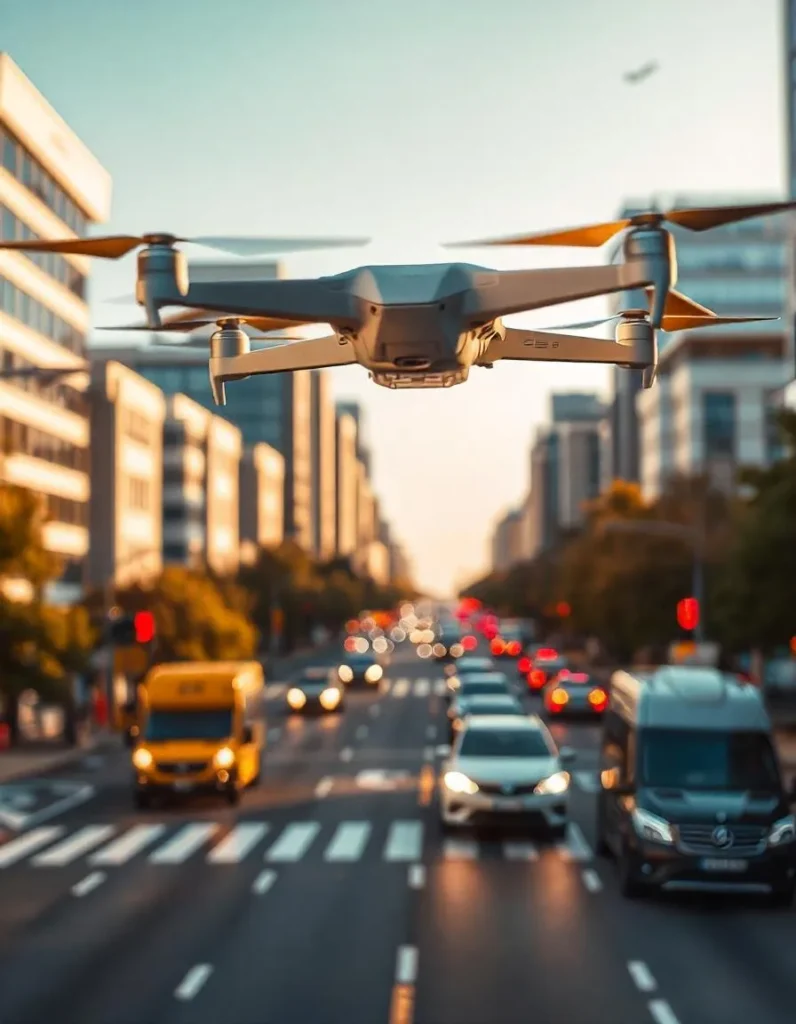Drones have come a long way from being just toys or military tools. Today, they’re revolutionizing industries and opening up possibilities that were once thought impossible. As technology improves, drones are becoming more efficient, versatile, and accessible. So, let’s dive into what the future of drone technology holds and how it will reshape various sectors like delivery, agriculture, healthcare technology, and even disaster relief.
1. Drone Delivery: Speeding Up the Future
One of the most talked-about uses of drones is in delivery. Companies like Amazon and Walmart are already testing drone deliveries, and the trend is only expected to grow. By 2026, it’s estimated that over 1.3 million drones will be in operation for deliveries across the globe. (Source: The Next Web)
Drones offer numerous benefits, such as:
- Faster deliveries: Drones can bypass traffic and take the most direct routes, speeding up delivery times.
- Cost efficiency: With fewer trucks on the road, costs can decrease.
- Environmentally friendly: Drones can reduce carbon emissions by eliminating the need for traditional delivery vehicles.
However, challenges like regulatory hurdles and airspace management are still major issues that need addressing. The Federal Aviation Administration (FAA) is working on the Remote ID system to help drones operate safely in shared airspace.
2. Agriculture: Drones as a Farming Revolution
Drones are transforming agriculture, especially in precision farming. Equipped with cameras and sensors, drones can monitor crop health, detect pest infestations, and even spray pesticides efficiently. Using drones in farming could increase crop yields by 15-20%, as they help farmers target specific areas of need, saving resources and reducing waste.
For example, DJI’s Agras drone can spray fertilizers and pesticides across large fields with precision, while DroneDeploy offers a platform for farmers to map out and analyze their fields, improving decision-making. These innovations reduce the reliance on manual labor and improve efficiency.
3. Healthcare: Drones to Deliver Critical Supplies
Drones in healthcare are already saving lives. In remote areas, they’re being used to deliver medical supplies, vaccines, and blood to places that are hard to reach. Zipline, for instance, has been using drones in Rwanda to deliver blood and essential medicines to remote hospitals. They’ve already completed over 200,000 deliveries.
The future could see drones being used for more critical applications, like emergency healthcare services. With drones equipped with thermal imaging cameras and AI-powered analytics, they could even be used in search and rescue missions to locate victims after natural disasters.
4. Disaster Relief: Drones to the Rescue
In disaster-stricken areas, drones provide essential assistance by delivering supplies and gathering real-time data on the extent of the damage. During hurricanes or wildfires, drones can fly over dangerous areas to assess the damage, locate survivors, and even deliver food and medical supplies.
For instance, Australia’s CSIRO used drones to assess wildfire damage and create detailed maps of affected areas. This data is crucial for directing emergency resources more effectively and minimizing further damage.
5. Urban Air Mobility (UAM): Drones as Air Taxis
The concept of drones as air taxis is no longer a science fiction dream but a potential reality. Companies like Joby Aviation are developing electric vertical takeoff and landing (VTOL) aircraft that could transport passengers within cities, bypassing road traffic entirely. These vehicles could be operational by the late 2020s, offering faster, more efficient transport in urban areas.
However, this technology is still in its infancy, with challenges related to safety, noise pollution, and regulatory approval. Still, the future of Urban Air Mobility (UAM) looks promising, especially with the continued progress of AI and battery technology.
6. Drones in Surveillance and Security
Drones are becoming an essential tool in security and surveillance. They can patrol large areas, monitor traffic, and detect suspicious activities in real time. Police departments in cities like Los Angeles have already deployed drones for crowd control and crime scene investigations.
With AI and machine learning becoming more integrated into drone technology, future drones will be able to identify and track specific objects or people, enhancing surveillance without human intervention. These drones will also be able to process data and make decisions autonomously, increasing efficiency in areas like border control, urban monitoring, and law enforcement.
7. Machine Vision & AI: Smarter Drones Ahead
The future of drones is deeply tied to advancements in AI and machine vision. These technologies allow drones to navigate autonomously, avoid obstacles, and even recognize objects. Skydio’s R1 drone, for instance, uses 13 cameras and AI to avoid collisions, making it one of the most advanced drones for filming and photography.
With the integration of deep learning algorithms, drones will become even smarter, able to adapt to their surroundings, avoid complex obstacles, and work in swarms (multiple drones working together to complete tasks).
8. Energy Efficiency: Drones with Longer Flight Times
A major limitation for drones today is their battery life. Most consumer drones only last around 20-30 minutes on a single charge, which limits their potential for long-distance tasks. However, hydrogen fuel cells and solar-powered drones are expected to become more common, providing longer flight times and reducing the dependency on traditional batteries.
For instance, Hydrogen-powered drones have already been tested, and they offer a clean energy source with nearly zero emissions, making them ideal for long-duration flights and commercial applications.
Conclusion: The Future is Drone-Powered
Drone technology is evolving rapidly, with innovations across industries such as delivery, agriculture, healthcare, and more. While challenges like regulation and safety remain, the future of drones looks incredibly promising. The impact of drones on society will be profound, from transforming urban transportation to enhancing emergency response capabilities and even improving global supply chains.
In the coming years, we can expect drones to become an even more integral part of our daily lives. From flying taxis to AI-powered drones that assist with disaster relief, the possibilities are limitless.



